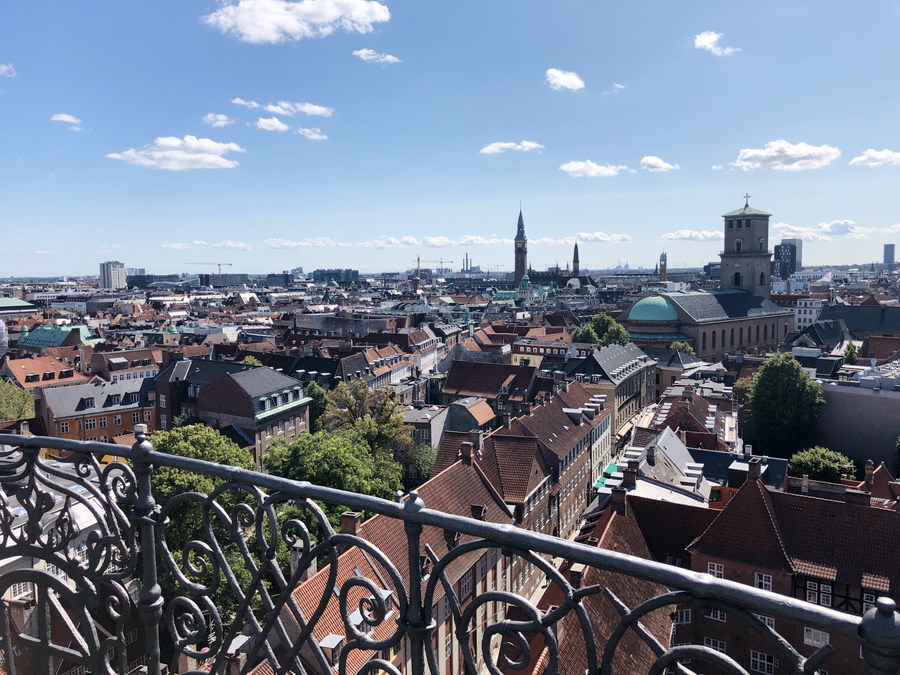First - prices.
A decent hotel - not swanky - about $200/night, with air conditioning. The breakfast though, was excellent. Yes, a buffet, as mentioned, but chock full of soft boiled eggs, yogurt, good bread, fresh fruit, cold cuts, butter, block cheese, and infused water.
Incidentally, courtesy of grandparents growing up who were from the Baltics, I was in heaven, especially after I managed to get my hands on smoked salmon and pickled herring. Your mileage likely varies - but even the more normal stuff to american tastes was fresh.
That said, while produce at a few of the local markets was reasonably priced by american standards, drinks at any bar or prepared food served at restaurants was exhorbitantly expensive. One of the cheaper meals was two hot dogs and a couple beers from a stand at Tivoli Gardens - think a smaller Disney world with a higher concentration of restaurants than rides - for roughly $20-$25.
This holds true in Norway as well. 7-eleven's are a thing there, and for the less well-heeled, grabbing a few beers there to hang out at park or such and drink was a far better option than forking over money at a bar.
If you want that kind of restaurant that both Taleb and I would hate, you can always try to get a reservation at Noma, repeatedly voted the "best restaurant in the world". The documentary is an overload of smug.
The channel between Denmark and Sweden had a zone set aside for windmills. I believe I already mentioned the bridge, but if not, yes, they are directly connected. I'm not sure of the original NordTV/Swedish series centered on that bridge or the British "Tunnel" reboot of the same concept was a more smug example of superior lefthink - though the Brit one was more focused on "nationalists bad." from the glimpses I caught.
Trash was - as much as possible - incinerated. And, since a large building was needed, they sloped the roof and turned it into a grass-covered ski slope.
You'll find a lot of larger, newer buildings have sod on the roofs. Sustainable architecture and all that.
While touring the city overall, and Tivoli itself were impressive, and there were a couple of very nice museums, the standout site for me was the Rundtarn, or "Round tower". It's an astronomical tower built into one end of a rather beautiful church, with an interior spiral path paved with bricks wide enough to drive a horse and carriage up.
What stood out to me was the somewhat smug snobbery of one of the otherwise friendly tour guides.
We're told of the amazing social welfare system, and how the Danish actually like paying taxes. Now, admittedly, they get a lot, but I can also tell you why it works, for now. Despite having more immigrants in, and the tourists (apparently with the holidays there were more tourists than residents in), it's still a pretty homogenous and well-educated population. The major exports, that make them a ton of money, are agriculture, and biomedical. They are also one of the major shippers, with Maersk being based there.
In short, a ton of money, from high-end high-tech and high-IQ jobs, with high wages, and plenty of slack to pay off a population that largely still has a work ethic.
I also got a dose of hard feminism, how the women now rule Denmark, both via the queen, as well as the PM and the primary breadwinners in more than half of families. And this is a good thing.
I'm glad they cleaned up the canals so they're swimmable again instead of toxic, but the tales of how it's a good thing that people aren't drinking on the job anymore, and the women instituted that, cause me to wonder how it is those industries, which predated the women "taking over" by decades, or centuries, were started or built up in the first place.
Also, the "slums" the guide pointed out had a Potemkin feel to it. Yes, you could tell it was the projects/government apartments, and it was clean. People were out playing with their kids, and the largest concentration of middle easterners were there. Heck, the park even had a fencing lane for the local fencing club.
But.
Around the corner by a couple blocks was another set of apartments that actually looked far grubbier and less cared for - though this being Copenhagen that was only relative. It actually wasn't the immigrant part of town - but it still had an uglier and more hopeless vibe. If I were more cynical I'd say the government puts more effort into keeping the show-ghetto's clean than they do the equally poor natives.
Overall though, interesting, with little of the ugly side of modern architecture, and a number of historic and significant buildings including original homes hundreds of years old, with pleasant people.

